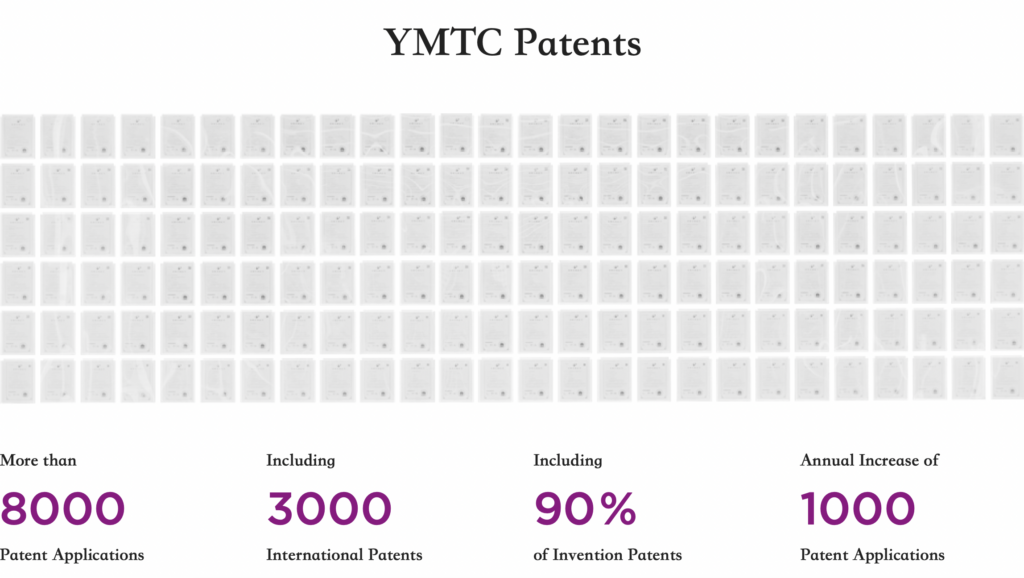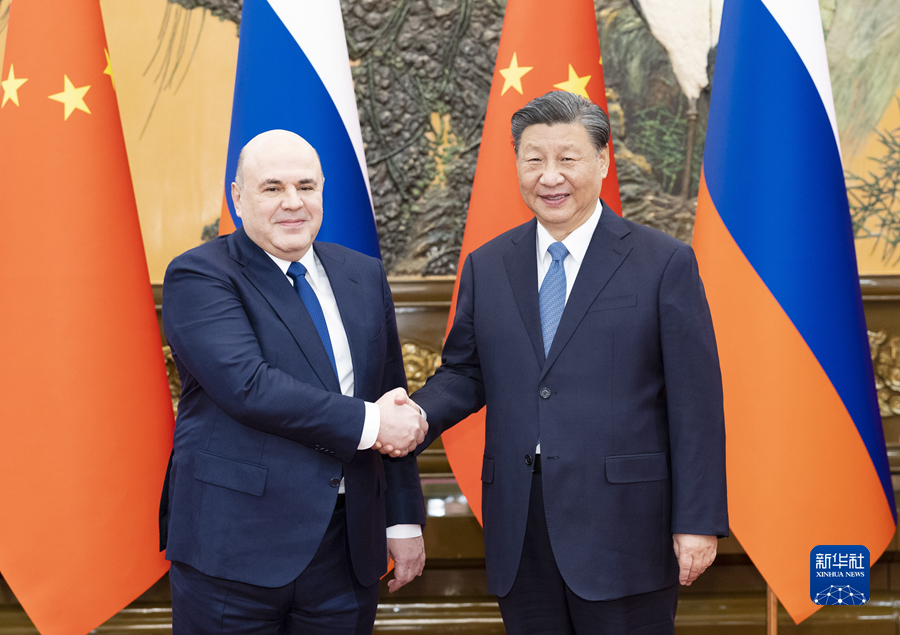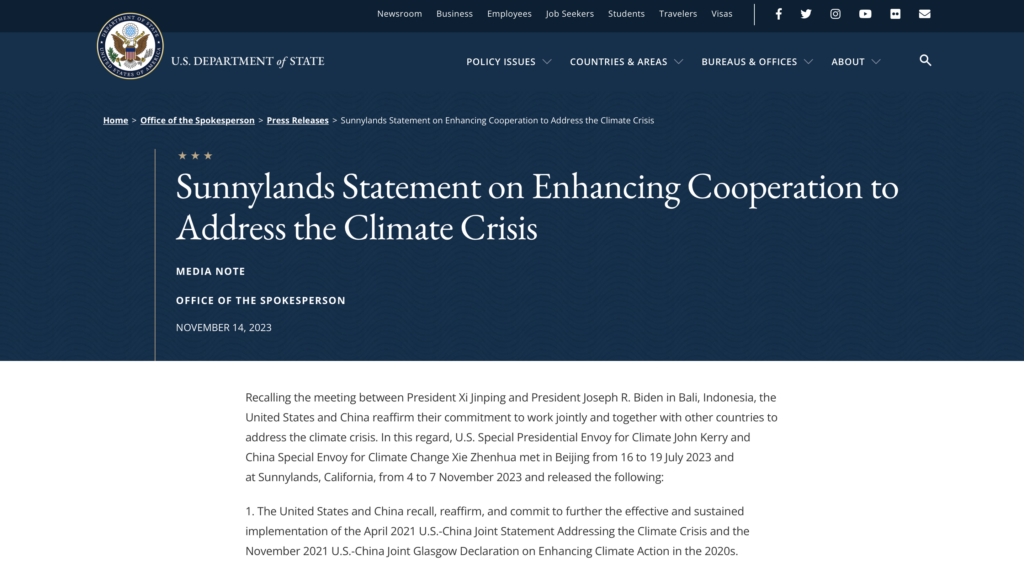Am wunderschönen Erhai-See in der südwestchinesischen Stadt Dali bieten Möwen, Regenbögen und blauer Himmel eine bezaubernde Landschaft.







(Quelle: CRI Deutsch, VCG)
Am wunderschönen Erhai-See in der südwestchinesischen Stadt Dali bieten Möwen, Regenbögen und blauer Himmel eine bezaubernde Landschaft.







(Quelle: CRI Deutsch, VCG)
Last month, the U.S. District Court for the Northern District of California announced that China’s Yangtze Memory had sued Micron Technology and its wholly-owned subsidiary Micron Consumer Products Group for the infringement of eight U.S. patents on 3D NAND technology used in the latter’s solid-state drive products.
NAND Flash and DRAM are currently the two most important storage media. NAND Flash can be used to manufacture memory, such as SSDs, which are utilized in cell phones, servers, PCs, and other products.
In the complaint, Yangtze Memory alleges that Micron’s unauthorized use of Yangtze Memory’s patented technology to compete with and protect its market share, along with Micron’s failure to pay reasonable fees for the use of said patents, infringes onYangtze Memory’s interests and curtails the latter’s incentive to innovate. It also alleges that Micron cited Yangtze Memory-related patents in its own patent documents, proving that Micron understands that Yangtze Memory’s patent portfolio is crucial. However, Micron has not taken any practical action to seek authorization for Yangtze Memory’s patents.

It is reported that the current case involving Yangtze Memory patents includes: US10950623, US11501822, US10658378, US10937806, US10861872, US11468957, US11600342, and US1086803. Micron is accused of infringing on 96-layer, 128-layer, 176-layer, and 232-layer 3D NAND products.
Yangtze Memory is the largest 3D NAND Flash manufacturer in China. Founded in July 2016, the company is an IDM IC company that specializes in the integrated design and manufacturing of 3D NAND flash memory, as well as providing complete memory solutions.
Yangtze Memory supplies 3D NAND Flash wafers and chips, embedded memory chips, and consumer and enterprise SSDs to its global partners for a wide range of products and solutions in mobile communications, consumer digital, computers, servers, and data centers.

There are two reasons why Yangtze Memory does have an advantage in 3D NAND technology.
First, Yangtze Memory chose to join the development of 3D NAND technology at a point in time when the development of traditional planar NAND Flash technology came to an end, and all the mainstream international manufacturers were moving to 3D NAND technology. This transition represents an important turning point in the development of NAND Flash technology.
The second advantage is the success of Yangtze Memory’s exclusive Xtacking technology, which has not only gained patent protection but has also allowed 3D NAND technology to quickly catch up with the international major players. The Xtacking technology has already been developed into the Xtacking 3.0 architecture.
There were rumors that many international storage companies, including Korean chip companies, were so interested in details of Xtacking technology that they would not rule out cooperating with each other in the form of technology cross-licensing.

In the indictment, Yangtze Memory pointed out that the brand is already an important player in the global 3D NAND field. Last November, market research firm TechInsights, stated that Yangtze Memory’s technology has already surpassed Micron’s.
In October 2022, the Bureau of Industry and Security of the U.S. Department of Commerce issued new export control regulations, restricting the export of chip manufacturing equipment and other equipment to China.
Before the U.S. imposed export controls on Yangtze Memory in October 2022, the company’s 128-layer 3D NAND chips had already entered Apple’s supply chain. Apple recognized these chips for their technology and quality and intended to use them in iPhones sold in the Chinese market.
These restrictions affected the number of layers of Yangtze Memory’s NAND Flash chips in the latest process that had been mass-produced. At that time, Apple also sought to adopt Yangtze Memory 3D NAND chips to reduce cost and avoid dependency on flash memory chips from Samsung, SK Hynix, and Micron. However, in December 2022, Yangtze Memory was added to the export control entity list, so Apple had to turn to other 3D NAND suppliers for its goods.

It is worth mentioning that, in addition to this complaint in the US, in May of this year, the Cyberspace Administration of China released a directive stating that, in accordance with Chinese Cybersecurity Law, domestic critical information infrastructure operators should cease purchasing Micron products.
Industry sources point out that the real purpose of Yangtze Memory initiating this patent war is to secure a fair negotiation for the company amidst the U.S. export control blockade, essentially fighting for the company’s survival.
Yangtze Memory also mentioned in the indictment that if the court fails to grant a permanent injunction on Micron’s products based on patent infringement, alternative measures should be explored. For instance, Micron could be required to pay a patent license fee to Yangtze Memory.
However, given the current semiconductor competition between the U.S. and China amid escalating tensions, the lawsuit’s symbolic significance in the broader context of U.S. companies facing challenges in China is likely more pronounced than its practical significance.
(Source: Yicai, EET China, YMTC, U.S. District Court for the Northern District of California)
Im MEB-Werk von Volkswagen Anhui in Hefei, der Hauptstadt der ostchinesischen Provinz Anhui, herrscht rege Betriebsamkeit, während mehr als 1.000 Roboter mit der Produktion von Fahrzeugen mit neuer Energie (NEVs) beschäftigt sind. Neben der Produktionsstätte wurden zwei Zuliefererparks eingerichtet, in denen sich bereits 18 Partner niedergelassen haben.

In nur zweieinhalb Jahren hat Volkswagen in Hefei ein neues Zentrum aufgebaut, das die gesamte Wertschöpfungskette von der Forschung und Entwicklung über die Produktion bis hin zum Vertrieb und Service von Fahrzeugen mit neuer Energie abdeckt.
“Wir nutzen gezielt neue Technologien und die hervorragende Infrastruktur von Anhui”, sagte Erwin Gabardi, CEO von Volkswagen Anhui. “Von dieser Innovationskraft werden auch wir profitieren.”
Volkswagen gehört zu den globalen Unternehmen, die ihre Investitionen in Chinas aufstrebende Industrien kontinuierlich erhöhen. Angesichts der Förderung industrieller und technologischer Innovationen in China werden immer mehr qualitativ hochwertige, erstklassige und technologisch innovative Branchen zum neuen Magneten für ausländische Investitionen.

Daten des Handelsministeriums (MOFCOM) zeigen, dass der tatsächliche Einsatz ausländischer Investitionen in der verarbeitenden Industrie in den ersten zehn Monaten des Jahres 2023 im Vergleich zum Vorjahr um 1,9 Prozent auf 283,44 Milliarden Yuan (etwa 39,84 Milliarden US-Dollar) gestiegen ist, wobei die Investitionen in der Hightech-Industrie einen Anstieg von 9,5 Prozent verzeichneten.
“Nehmen wir Anhui als Beispiel: Ausländische Unternehmen haben hier ihre eindeutige Bereitschaft bekundet, ihre Investitionen in Branchen wie die Herstellung von High-End-Geräten, neue Energien und andere verwandte Sektoren auszuweiten”, sagte Wang Yaping, stellvertretende Geschäftsführerin der Deloitte-Niederlassung Hefei.
Laut einer Marktstudie des Unternehmens hätten die Aufwertung des chinesischen Verbrauchermarktes und die Förderung wissenschaftlich-technischer Innovationen die Bereitschaft ausländischer Unternehmen, neue Geschäftsfelder in China zu erschließen, kontinuierlich gestärkt, fügte Wang hinzu.

Als eine der repräsentativsten aufstrebenden Industrien Chinas hat die boomende Industrie für Fahrzeuge mit neuer Energie in den letzten Jahren globale Automobilhersteller angezogen, die ihre Investitionen ausweiten und eine komplette Industriekette aufbauen.
Mit einer Investition von über 7,5 Milliarden Yuan gründet Volkswagen im Jahr 2023 die Volkswagen Group China Technology Company, die nach ihrer Fertigstellung das größte Entwicklungszentrum außerhalb Deutschlands sein wird. Im vergangenen Monat gab das Unternehmen Pläne zur Entwicklung seiner ersten China-spezifischen Elektroauto-Plattform bekannt.
“Im Laufe der Jahre haben wir konsequent in Anlagen und Plattformen investiert, um Produktion, Forschung und Entwicklung sowie Vertrieb und Service im Bereich der Fahrzeuge mit neuer Energie zu unterstützen. Mit unserer ‘in China für China’-Strategie werden wir in Zukunft viel mehr Technologie hier entwickeln. Wir werden die lokale Innovationskraft besser nutzen und schneller auf die Bedürfnisse der chinesischen Kunden reagieren”, sagte Gabardi gegenüber Xinhua.

Im Mai 2023 begann das Joint Venture der BMW Group in China, BMW Brilliance Automotive Ltd., mit dem Bau einer neuen Produktionsstätte für Batterien in Shenyang, der Hauptstadt der Provinz Liaoning im Nordosten Chinas.
Neben der NEV-Industrie hat auch die innovative Entwicklung Chinas in Bereichen wie der biologischen Medizin und der digitalen Wirtschaft ausländischen Investitionen einen nachhaltigen Impuls gegeben.
“Wir werden unsere Entwicklung in China fortsetzen, wissenschaftliche Innovationen aktiv fördern und ständig neue Möglichkeiten in neuen Bereichen erkunden”, sagte Liu Zhifei, Präsident und General Manager von Corning Greater China.

Im September 2023 eröffnete Corning seine Anlage für Advanced Flow Pharmaceutical Technology (AFPT) in einem biomedizinischen Industriepark in der Stadt Suzhou in der Provinz Jiangsu. Die AFPT-Dienstleistungen werden schnellere Methoden zur Identifizierung wirksamer Substanzen in der Frühphase der Forschung bieten und dazu beitragen, die Zeitspanne der Arzneimittelentwicklung zu verkürzen.
Branchenkenner sind der Meinung, dass der Aufbau eines erstklassigen Geschäftsumfelds neben dem Boom in den aufstrebenden Industrien einer der Schlüsselfaktoren ist, der ausländische Unternehmen ermutigen wird, in China zu bleiben und sich gut zu entwickeln.
Die Zentralregierung und die lokalen Regierungen haben eine Reihe von Maßnahmen ergriffen, um ein erstklassiges Geschäftsumfeld zu schaffen. Die Provinz Anhui beispielsweise habe gezielte Strategien und Maßnahmen eingeführt, um ausländische Unternehmen bei der Einrichtung von Forschungs- und Entwicklungszentren zu unterstützen, sagte Zhang Rui, ein Beamter der Handelsabteilung der Provinz Anhui.

“Die lokale Regierung hat uns ein fruchtbares Marktumfeld und unermüdliche Unterstützung geboten”, so Gabardi. “Sie hat Vergünstigungen eingeführt, die den raschen Fortschritt unseres Projekts vorantreiben können, und sie hat uns bei der Anwerbung und Förderung von Talenten unterstützt.”
Laut einer Umfrage des Chinesischen Rates zur Förderung des internationalen Handels (CCPIT), die im dritten Quartal dieses Jahres durchgeführt wurde, geben über 80 Prozent der befragten Unternehmen an, dass sie mit dem Geschäftsumfeld in China zufrieden sind.
(Quelle: CRI Deutsch, VW Xinjiang, BMW Shenyang, Mercedes Beijing, Audi Shanghai)
Der chinesische Staatspräsident Xi Jinping ist am Mittwoch in der Großen Halle des Volkes in Beijing mit dem russischen Premierminister Michail Mischustin zu einem Gespräch zusammengekommen.

Xi sagte dabei, die Regierungen, gesetzgebenden Körperschaften, politischen Parteien und lokalen Gemeinschaften der beiden Länder hätten seit Anfang des laufenden Jahres einen engen Austausch gepflegt, während die praktische Zusammenarbeit in verschiedenen Bereichen sich gesund und stetig entwickelt habe. In den ersten elf Monaten des laufenden Jahres habe der bilaterale Handel zwischen China und Russland das von den Staatsoberhäuptern beider Länder gemeinsam gesetzte Ziel eines jährlichen Handelsvolumens von 200 Milliarden US-Dollar früher als geplant erreicht, was die starke Widerstandsfähigkeit und die weitreichenden Aussichten einer für beide Seiten vorteilhaften Zusammenarbeit unter Beweis stellte.
Die Aufrechterhaltung und der Ausbau der chinesisch-russischen Beziehungen sei eine strategische Entscheidung, die von beiden Seiten auf der Grundlage der grundlegenden Interessen der beiden Völker getroffen worden sei.

China unterstütze das russische Volk dabei, den von ihm selbst gewählten Weg der Entwicklung einzuschlagen. China sei bereit, mit Russland den 75. Jahrestag der Aufnahme diplomatischer Beziehungen beider Länder im nächsten Jahr als neuen Ausgangspunkt zu nehmen, die positiven Auswirkungen der hochrangigen politischen Beziehungen beider Länder kontinuierlich zu verstärken sowie weiterhin Hand in Hand den Prozess der umfassenden wirtschaftlichen und sozialen Entwicklung ihrer jeweiligen Volkswirtschaften voranzutreiben und die Wiederauferstehung ihrer Nation zu verwirklichen.
Die Grundlagen der chinesischen Wirtschaft, die widerstandsfähig sei, über ein großes Potenzial und einen großen Handlungsspielraum verfüge sowie sich langfristig auf dem Weg der Besserung befinde, blieben unverändert, so Xi weiter. Chinas entschlossene Förderung einer qualitativ hochwertigen Entwicklung und die Öffnung nach außen auf hohem Niveau würden neue Chancen für die Entwicklung aller Länder, einschließlich Russlands, bieten.

Beide Seiten sollten die Vorteile des gegenseitigen politischen Vertrauens, der wirtschaftlichen Komplementarität, der Verbindung von Infrastrukturen und der Freundschaft zwischen den Bevölkerungen voll ausschöpfen, die Bedeutung der Zusammenarbeit ständig erweitern, die Zusammenarbeit in den Bereichen Wirtschaft und Handel, Energie und Konnektivität vertiefen sowie gemeinsam die Sicherheit und Stabilität der Industrie- und Lieferkette gewährleisten.
Beide Seiten sollten das chinesisch-russische Kulturjahr in den kommenden zwei Jahren gut organisieren und farbenfrohe Aktivitäten zum Kulturaustausch konzipieren und durchführen, um das Fundament in den Gesellschaften und in der öffentlichen Meinung beider Länder für die langfristige Freundschaft zu festigen, so der chinesische Staatspräsident.
(Quelle: CRI Deutsch, Xinhuanet)
Tausende von Jangtse-Krokodilen im Krokodil-Naturschutzgebiet in der Provinz Anhui werden umziehen, weil das Wetter umschlägt und kälter wird. Sie werden von draußen nach drinnen ziehen, um dort den kalten Winter zu verbringen. Anders als in den Vorjahren sind in diesem Jahr die ersten Überwinterungsbecken im Naturschutzgebiet offiziell eröffnet worden.

In den nächsten Tagen werden etwa 2.000 Jangtse-Krokodile aus dem Aufzuchtbecken in die Überwinterungsanlage gebracht. Die Mitarbeiter fangen die Krokodile derzeit mit Händen im Schlamm. In der Vorstellung vieler Menschen sind Krokodile sehr wild und sie mit bloßen Händen zu bewegen, klingt gefährlich.
Tatsächlich hat das Jangtse-Krokodil unter allen Krokodilen ein sehr sanftmütiges sowie schüchternes Temperament und greift Menschen im Allgemeinen nicht aktiv an. Aber es ist immer noch ein Krokodil, welches sein wildes Wesen behalten hat. Der Umzug eines Krokodils muss daher von professionellen Mitarbeitern durchgeführt werden.

Die Umzüge erfolgen in der Reihenfolge vom kleinsten zum größten Tier. Heute ist der erste Tag und die ersten, die umziehen müssen, sind hauptsächlich junge Krokodile unter sieben Jahren, die sich noch nicht so gut an die Umgebung anpassen können und deshalb so schnell wie möglich in einen Raum gebracht werden müssen. Bevor sie in den warmen Raum umziehen, müssen die Krokodile gespült sowie sterilisiert werden.
Nach der Eingewöhnung wird die Temperatur im Überwinterungshaus auf etwa zehn Grad Celsius gehalten. Die Mitarbeiter werden das Haus regelmäßig reinigen und befeuchten, damit die Krokodile den Winter über sicher sind.

Dieses Jahr hat das Naturschutzgebiet künstliche Höhlen neben dem Fütterungsbecken gebaut. Wenn es abkühlt, werden die Krokodile durch die Löcher hineinklettern. Wie auf den Überwachungsbildern zu sehen ist, haben bereits einige Krokodile versucht, in das Gebiet zu gelangen.
Das Jangtse-Krokodil ist eine seltene, in China endemische Art, die von der Weltnaturschutzunion (IUCN) als „stark gefährdet“ eingestuft wird, weil es nur noch wenige von ihnen gibt.
Die kirgisische Stickerei im Uigurischen Autonomen Gebiet Xinjiang ist ein nationales immaterielles Kulturerbe. In einer Berufs- und Fachhochschule stellt eine Lehrerin im Unterricht die traditionelle Kunst vor.


(Quelle: CRI Deutsch)
On December 9, the ninth day of the 28th United Nations Climate Conference (COP28), at 4:30 p.m., China’s Special Envoy for Climate, Xie Zhenhua, held the first press conference of the Chinese delegation.
The impact of climate policies on trade, such as the Carbon Border Adjustment Mechanism (CBAM), is not on the agenda of this climate conference but is widely scrutinized and controversial.

On the first day of the conference, some EU countries led by Germany, the United States, Chile, Argentina, Indonesia, and other 36 countries set up the Climate Club, which implements uniform tariffs and carbon pricing policies internally and creates barriers externally, and includes major developed countries and some important new energy resource countries, but China is excluded.
The following is a summarized transcript of key questions from the conference.
Reuters: Regarding fossil energy, all four options have the concept of phase-out, can China accept the phase-out?
“There are more than four choices, and the positions on this issue are very antagonistic, China is in the process of intensive consultations with major countries and major groups, hoping to find a clear and correct direction for the future, but also reflecting the greatest inclusiveness, so that we can all accept the results.”
The Paper: What has China done to promote consensus on the issue of fossil energy?
“On November 15, before the opening of COP28, China and the U.S. issued the Sunnylands Statement on Enhancing Cooperation to Address the Climate Crisis, and one of the purposes of this statement is to propose solutions to some of the controversial focuses that may arise at this conference. Some countries are strongly opposed to phasing out or reducing fossil energy, and some countries are strongly in favor of phasing out fossil energy, and there are also some compromise solutions. We are in the process of communicating with all parties to find a solution that reflects the greatest inclusiveness and points out the way forward.”

Guardian: Does China support phasing out fossil fuels?
“We should vigorously develop renewable energy, gradually replace coal, oil, and gas with renewable energy, and ultimately solve the problem of greenhouse gasses. We do not prejudge the final result, but we accept a statement that can reflect everyone’s opinions, the general trend of energy transformation and innovation, and be also in line with the spirit of the Paris Agreement.”
CCTV Finance: More than 100 countries have signed a declaration to triple the installed capacity of renewable energy by 2030 compared with 2022, what progress has China made in this regard?
“China has made great contributions to the global energy transition and the development of renewable energy. So far, the cost of wind power has been reduced by 80% and the cost of photovoltaic power by 90%, which has laid a very good foundation for the large-scale deployment of renewable energy around the world. China’s installed capacity of renewable energy has exceeded that of coal power due to its vigorous development of renewable energy, which is a major shift in the energy structure, and we need to continue to strengthen the development and utilization of renewable energy and finally strive to gradually replace fossil fuels. The G20 has proposed that the global renewable energy target should be increased by a factor of two, and China supports this. In addition, China and the oil-producing countries in the Middle East should continue to cooperate in the development of renewable energy, the development of green hydrogen, green ammonia, green alcohol, and so on.”

Danish media: China’s previous goal was to achieve carbon peaking by 2030, is it possible that this goal will be advanced given the rapid development of renewable energy?
“This target does not need to be adjusted, we are talking about before 2030, exactly which year, we are now measuring. But we will propose which year to reach the peak and what is the absolute amount. China has moved from dual control of energy to dual control of carbon emissions, which is a strategic shift. If this shift is realized by 2025, China will come up with what year we are going to reach the carbon peak and what is the absolute amount of the peak. But it’s certainly not 2030, it’s before 2030.”
The New York Times: About a year and a half ago, the U.S. released the Inflation Reduction Act (IRA), which also has the additional purpose of reducing U.S. dependence on Chinese manufacturing and developing U.S. domestic manufacturing. What kind of impact do you think this U.S. bill has had?
“I recently visited the U.S. and saw that California has done a lot of work on climate action, and they also told me that a lot of the action that can be carried out is because of the subsidies provided by the Inflation Reduction Act, which provides incentives, and in terms of climate action, this bill has played a very important role. But again, the bill protects domestic technology and domestic products, so why can’t other countries’ technology and products be treated the same way in the US? Why can’t the technology and products of other countries get the same treatment in the U.S.? “

RFI: The UAE was the first country to contribute to the Loss and Damage Fund with $100 million. Is China, also an emerging economy, ready to contribute to the Loss and Damage Fund and provide funds?
“China has carried out South-South cooperation in the field of climate change to help developing countries improve their capacity to cope with climate change, mitigate and adapt to climate change, and we have been doing this for 10 years. during the past 10 years, we have carried out cooperation on green energy projects with more than 100 countries and regions, and we have constructed wind power and photovoltaic projects in Ethiopia, Argentina, and Montenegro, and we have signed 46 South-South cooperation documents with 39 countries, and have constructed 3,000 wind power and photovoltaic projects. We have signed 46 South-South cooperation documents with 39 countries, and have built three low-carbon demonstration zones, 70 mitigation and adaptation projects, and three early warning projects. We have carried out actions on the ground, both in terms of donations and financing. We have also organized 52 training courses on South-South cooperation to address climate change, training more than 2,300 officials and technicians from 106 countries and helping them to improve their capacity to address climate change. In the future, we will further intensify South-South cooperation and increase financial and technical cooperation with developing countries in this regard. Support and assistance to developing countries can take various forms, and we are strengthening cooperation with and support for developing countries through the two channels of South-South cooperation and the Green Belt and Road.”
(Source: U.S. Department of State, 2M, COP28)
Chinas Handy-Auslieferungen seien im Oktober im Vergleich zum Vorjahr um 19,7 Prozent auf über 29,16 Millionen Stück gestiegen, teilte die Chinesische Akademie für Informations- und Kommunikationstechnologie (CAICT) mit.
5G-Handys machten den Großteil der Oktober-Auslieferungen aus, die sich auf 26,44 Millionen Einheiten belaufen hätten, was eine Steigerung von 35,5 Prozent im Vergleich zum Vorjahr bedeute, so die CAICT, ein Forschungsinstitut des Ministeriums für Industrie und Informationstechnologie.
In den ersten 10 Monaten stieg die Gesamtzahl der ausgelieferten Handys im Jahresvergleich um 4,2 Prozent auf 230 Millionen Einheiten, wie die Daten zeigten.
Inländische Marken dominierten im Oktober weiterhin den chinesischen Handymarkt mit einem Anstieg der Auslieferungen um 7,2 Prozent auf 18,01 Millionen Geräte.
Insgesamt kamen im Oktober 50 neue Modelle auf den heimischen Markt, was einem Anstieg von 51,5 Prozent gegenüber dem Vorjahr entspricht, wie die Daten der CAICT zeigten.
(Quelle: CRI Deutsch)
Der chinesische Ministerpräsident Li Qiang hat am Sonntag ein Dekret des Staatsrats unterzeichnet, mit dem die Regeln für Aufsicht und Verwaltung von Nichtbanken-Zahlungsinstituten vorgestellt werden.
Die Vorschriften, die am 1. Mai 2024 in Kraft treten werden, sollen die gesunde Entwicklung des Sektors fördern, die Rechte und Interessen der Kunden schützen und die Nichtbanken-Zahlungsinstitute dabei unterstützen, der Realwirtschaft besser zu dienen sowie dem Bedürfnis der Kunden nach diversifizierten Zahlungsmethoden gerecht zu werden.
Mit den neuen Vorschriften werden auch die Definition für Nichtbanken-Zahlungsinstitute und ihre Niederlassungsanforderungen präzisiert. Sie werden auch dazu aufgefordert, die Sicherheit von Zahlungskonten zu gewährleisten und sich vor illegaler Mittelbeschaffung, Telekommunikationsbetrug, Geldwäsche, Glücksspiel sowie anderen kriminellen Aktivitäten zu schützen, heißt es in den Vorschriften.
(Quelle: CRI Deutsch, VCG)
Die Integration im Jangtse-Delta hat sich in den letzten fünf Jahren beschleunigt. Bei diesem Prozess hat die regionalübergreifende Kooperation von der wissenschaftlichen sowie technologischen Innovation eine bedeutende Rolle gespielt.
Die Metropole Shanghai und die Provinzen Jiangsu, Zhejiang sowie Anhui, die von der Integration im Jangtse-Delta betroffen sind, haben sich seit Jahren auf das Teilen von Ressourcen sowie den Co-Aufbau von Innovationsplattformen konzentriert. Eine Reihe von wissenschaftlichen Labors rund um die Quantentechnologie, die Kernfusion, die Weltraumforschung, die künstliche Intelligenz sowie die Biomedizin ist in dem Gebiet errichtet worden. Im Bezirk Zhangjiang in der Metropole Shanghai sowie in der Stadt Hefei in der Provinz Anhui ist jeweils ein umfassendes Wissenschafts- und Technologie-Innovationszentrum auf Staatsebene gegründet worden. All dies dient dazu, das Innovationsökosystem in dem Gebiet kontinuierlich zu optimieren.

Um das Niveau der industriellen technologischen Innovation zu erhöhen, haben Shanghai und die drei Provinzen zusammengearbeitet, um eine strategische Technologiekraftmatrix zu schaffen. Im Jangtse-Delta hat sich der Aufbau von industriellen Innovationsplattformen beschleunigt. Es geht um die Zentren für solare Photovoltaik, Kohlefasern sowie Verbundwerkstoffe.
Im Jahr 2016 wurde im Bezirk Songjiang in der Metropole Shanghai das Projekt der umfassenden Wissenschafts- und Technologie-Innovationszone „G60“ in Betrieb genommen. Im Rahmen des Projekts sind neben Songjiang auch weitere Städte wie Jiaxing, Hangzhou, Jinhua, Suzhou, Huzhou, Xuancheng, Wuhu sowie Hefei betroffen. Den aktuellen Forschungsergebnissen des Shanghaier Forschungsinstituts für Wissenschaft zufolge hat die Innovationszone „G60″ eine wichtige Rolle für die kollaborative Innovation im Jangtse-Delta gespielt. Es ist zu einer wichtigen Quelle für die wissenschaftlichen sowie technologischen Innovationen von China und zu einer wichtigen Meilensteinregion für den Wettbewerb sowie die Zusammenarbeit von wissenschaftlichen und technologischen Innovationen der Welt geworden.

Gezielt auf die nationalen strategischen Bedürfnisse hat in den letzten Jahren im Jangtse-Delta eine Reihe von großen wissenschaftlichen sowie technologischen Projekten große Erfolge erzielt. Im Jahr 2022 erhielt das erste von China selbst entwickelte und gebaute Passagierflugzeug C919 das Qualifikationszertifikat der chinesischen Zivilluftfahrtbehörde. Im Jahr 2023 hat das vollständig supraleitende Tokamak-Fusionsexperiment (EAST) bekannt als die „künstliche Sonne“, einen Weltrekord für 403 Sekunden stationären Hoch-Einschluss-Plasmabetrieb aufgestellt. Im Oktober 2023 wurde der Prototyp des „Jiuzhang-3″ Quantencomputers erfolgreich entwickelt und erneut der Weltrekord für das Niveau der Quanteninformationstechnologie und die Überlegenheit des Quantencomputers gebrochen.
Dank den Bemühungen sowie Kooperation von der Metropole Shanghai und den vier Provinzen wurde die tiefe Integration von wissenschaftlichen sowie technologischen Innovationen im Jangtse-Delta auf ein höheres Niveau gebracht. Dabei wurden neue Impulse für die qualitativ hochwertige Entwicklung von China gegeben.
(Quelle: CRI Deutsch)